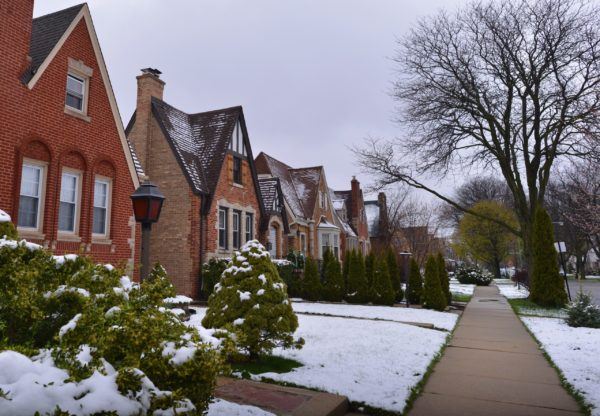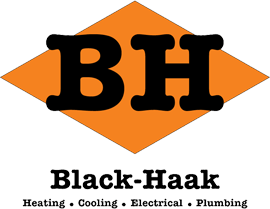
What You Need to Know About Covering Your HVAC System This Winter
Installing new and highly efficient HVAC equipment in your Fox Valley, Wisconsin home can cost quite a bit. Quality heating and cooling equipment ranks among the most expensive improvements that homeowners can make, but it’s also among the most essential. Without it, it’s more difficult to remain safe and comfortable indoors when the outside temperatures plummet or soar. Thus, as winter comes rolling in, you may be tempted to cover HVAC system’s outside components. Following are several reasons why you shouldn’t.
AC Equipment Manufacturers Build Their Products With Resilience in Mind
AC condensers and heat pump condensers are generally the main point of concern when it comes to protecting HVAC equipment from the natural elements. The thought of having these costly, outdoor components be exposed to freezing precipitation, strong winds, and pooling water can be downright terrifying when you know their worth. Fortunately, the companies that make these units have already considered the effects of the natural elements.
Heat pump and air conditioner condensing units are built to withstand precipitation, temperature extremes, and more. They’re surprisingly resilient. In fact, if you check your owner’s manual, you’ll likely find that covering your AC or heat pump up during the winter isn’t recommended. Your manual may even strongly advise against the use of winter covers at all.
HVAC Companies Choose Models That Hold up Well in Local Climates
When choosing and installing air conditioners and heating systems, HVAC companies carefully consider local climates. This is one of the reasons why it’s always best to have licensed HVAC professionals handle both the installation and the selection of these products. Not only will your provider choose an option that’s powerful enough to heat and cool your household, but they’ll also make sure that all outside components are designed to withstand the winter weather conditions in your area. Thus, if you have HVAC equipment that’s been professionally selected for your home, you can rest assured that its condenser is built to hold up well outdoors.
AC and Heat Pump Condenser Covers Trap Moisture and Inhibit Airflow
Condenser covers are rarely recommended by either equipment manufacturers or HVAC system installers. This is because they’re prone to trapping large amounts of moisture in and around condensers that will eventually lead to the development of corrosion. Putting a condenser cover on your air conditioner or heat pump at the start of the cooling season and then waiting all winter long to take it back off can result in serious damage. When the cover is finally removed, you’ll likely find massive amounts of rust, and you may need to replace the condenser altogether.
Covering condensers is especially problematic when homeowners design these covers themselves. Wrapping these units up in large sheets of plastic or covering them with tarps severely restricts airflow. Not only do these coverings trap moisture in, but they also prevent this moisture from ever evaporating and drying out. Although store-bought condenser covers have mesh and larger-sized holes for ventilation, they still increase the likelihood of corrosion.
Condenser Covers Are Designed for Short-Term Use
You may be wondering why HVAC product manufacturers design winter covers for outdoor heating and cooling equipment if covers are prone to causing corrosion and other damage. The answer is simple. Condenser covers do have their merits in certain situations, but only if they’re used on a very short-term basis. For instance, if there’s a major storm headed your way and you want to make sure that your condenser doesn’t have small rocks, twigs, or other debris blown into it, you can apply a cover until the very worst of this weather event has passed. However, as soon as you’re able, you should take the AC condenser cover back off. To prevent corrosion, these covers should never be left in place for more than 24 to 48 hours at a time.
There Are Far Better Ways to Care for Your AC Condenser in Winter
There are certain forms of weather-related damage that condensers simply aren’t built to resist. For instance, large-sized hailstones can wreak havoc on condensers just as they can on home gutter systems, automobiles, aluminum sheds, and countless other structures. Impact events involving falling tree branches and melting icicles can be detrimental as well. Thus, rather than putting a soft-sided cover over your condenser that traps moisture in, you might want to build a free-standing shelter around it.
Freestanding shelters for condensers can provide year-round benefits in some locations. This is certainly the case when condensers lack nearby structures that act as formidable barriers between condensers and blowing debris or falling objects. More often than not, outdoor HVAC components are guarded on one side by fixed building structures and on the other by property fences. However, some condensers don’t have this protection. Moreover, they might be subject to major thermal heat gains in summer due to constant and direct exposure to sunlight.
If a condenser sits right beneath a tall tree, broken branches, and falling seeds, cones, or fruit can be detrimental. A freestanding shelter will serve as the primary point of impact when icicles break off, larger debris gets blown towards a condenser, or roofing materials come loose. Beneath these structures, condensers will remain unharmed. Best of all, solid, hard-sided covers that are freestanding rather than being applied directly to condensers won’t trap moisture, inhibit airflow, or cause rust to form.
Other Ways to Keep Your HVAC Equipment Safe During the Cold Season
General system maintenance and property care are always the best ways to keep your HVAC system protected during winter. Before the cold season arrives, you should have your home’s heating system professionally tuned up. During this visit, we can make sure that your air conditioner is properly winterized for the weather-related challenges that lie ahead.
Having nearby trees pruned or limbed will prevent falling branches. If you have recurring problems with ice dams on your roof, installing gutter heaters and improving your attic insulation will prevent icicles from forming and falling on your condenser.
Throughout the winter, you want to regularly clear accumulations of snow off of your outdoor HVAC components. Heavy snow loads can exceed the weight-bearing limits of condensers. More importantly, if they melt and refreeze, they can form even heavier sheets of ice. When clearing your sidewalk, driveway, and roof, use a soft broom or brush to gently clear your condenser. Avoid using shovels, ice picks, or other sharp, heavy tools for this task.
Finally, make sure to clear the area around your condenser’s perimeter. Removing twigs, larger rocks, and other wind-blown debris is a quick and easy way to keep these things from getting forced into the condenser and damaging its coils. You should also store or secure any small-sized items in your yard that might get blown into this unit.
As ever, all air conditioners and heat pumps should be given needs-specific maintenance. Your equipment manufacturer or the company that has selected and installed your equipment can give you individualized maintenance tips for keeping your HVAC system in optimal condition throughout the cold season.
Since 1956, Black-Haak has been providing reliable heating and cooling services to residents of Fox Valley, Wisconsin and the surrounding area. We also offer plumbing, electrical, and home protection services. If you need help winterizing your HVAC equipment, give us a call now.

